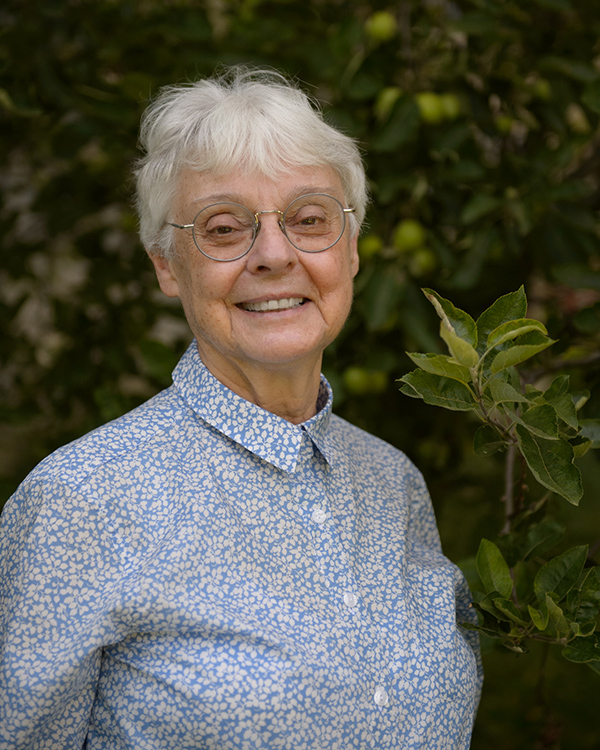MICHÈLE GERBALDI LAUREATE OF THE “ASTRONOMY FOR DEVELOPMENT” PRIZE OF THE INTERNATIONAL ASTRONOMICAL UNION PRIZE
 Michèle Gerbaldi
Michèle Gerbaldi
Credit: Jean Mouette /IAP-CNRS-SU
Michèle Gerbaldi is the first laureate of the “Astronomy for Development” Prize newly created by the International Astronomical Union in 2022. The prize is awarded to her on August 2, 2022, during the International Astronomical Union General Assembly in Busan, in South Korea, for her contributions in the areas of development and capacity building through astronomy, especially in developing countries. This prize recognizes her leading role in the establishment of numerous international schools for young astronomers, including the International School for Young Astronomers (ISYA), as well as in the Starlight in the University Lab (AstroLab) program, for the initiation of students from sub-Saharan Africa and South America in scientific method through remote observation with professional-type telescopes.
Michèle Gerbaldi, currently an external collaborator at Sorbonne University, is a retired senior lecturer from the Paris-Sud University (now Paris-Saclay University). She worked as a researcher at the Institut d’astrophysique de Paris (IAP) throughout her career, after a doctorate in observational astrophysics in 1977. Her research work focused on various classes of particular and/or young stars (stars with types Bp, Ap, Am, Blues Stragglers, Lambda Bootis etc.), by combining ground observations (Observatoire de Haute-Provence (OHP), European Southern Observatory (ESO), the Canada-France-Hawaï Telescope (CFHT) with spatial observations (for example with the International Ultraviolet Explorer, IUE; Hipparcos). Her scientific objectives were to model the structure of the atmosphere of these stars, within the framework of international collaborations, and these analyzes contributed to refine the models of stellar atmosphere.
From 1968, new approaches to teaching begin to be discussed, particularly at the IAP. In 1970, Michèle Gerbaldi takes part in the General Assemby of the International Astronomical Union (IAU) in Brighton. The activities of Commission 46 “Teaching Astronomy” (now Commission C1: Astronomy Education and Development) catches her attention. Michèle Gerbaldi then undertakes to distribute astronomical slides intended for teaching to countries lacking astronomical infrastructure with the support of the UNESCO Courier and the IAP.
The General Assembly of the IAU (see General Assemblies and Administrative Meetings) in Grenoble in August 1976 is an opportunity to organize for the first time a meeting between professional astronomers and teachers from high schools. This is how Michèle Gerbaldi contributes in 1977 to the creation of the Comité de Liaison Enseignants et Astronomes (CLEA), and participated actively until 2000 in the summer schools and other CLEA actions.
In 1976, Michèle Gerbaldi becomes a member of the IAU and gets involved in the projects of several commissions concerning stellar physics, both theoretically and observationally, being in particular President from 1997 to 2000 of Commission 45 “Stellar Classification” of the IAU.
The appointment in 1991 of Michèle Gerbaldi as deputy director of the International School for Young Astronomers (ISYA) then director from 1997 to 2007, enables her to integrate these schools within the framework of the marked expansion of computer science, in particular by using the observation databases created by international observatories. ISYA schools are aimed at students from “astronomically developing” countries, holders of a Master's degree or having started their thesis. This program created by the IAU in 1967, is organized in regions where students have less opportunity to access current developments in astrophysics, or to multidisciplinary developments both in the observational and theoretical fields. The ISYAs (whose director and deputy director are Itziar Aretxaga and David Mota, respectively) are in line with the context of the globalization of knowledge, allowing young astronomers to create their own networks. The usefulness of this program for scientific training in developing countries is underlined by participants years later. Michèle Gerbaldi participates in several ISYAs until 2015 and is currently a member of the IAU office for these schools.
The ten-year plans of the IAU widen considerably the field of action in the field of astronomy as a tool for development by highlighting the interdisciplinarity of this science and by using it in many fields (see the Strategic Plan of the IAU for 2020-2030). Thus, within the framework of the Office of Astronomy for Development (OAD), Michèle Gerbaldi, since 2013, develops with Jean-Pierre DeGreve the Starlight in the University Lab project (AstroLab), a practical activity associated with observations made directly by the students, thanks to an array of 40 cm robotic telescopes in both terrestrial hemispheres. AstroLab can be integrated into an astrophysics course depending on the university curriculum, or be used more widely in the context of engineering sciences for example. AstroLab is articulated around the analysis of CCD images obtained by the students, which involved the search for a collaboration with Las Cumbres Observatory (LCO) to allow access - without funding - to robotic telescopes for developing countries, thus helping to reduce inequalities between universities.
In 2022, the International Astronomical Union (IAU) creates three new awards: Astronomy for the Public, Astronomy for Development, and Astronomy for Education. These prizes will be awarded every 3 years during the IAU General Assembly. The IAU “Astronomy for Development” Prize is awarded on August 2, 2022, to Michèle Gerbaldi for her significant and lasting contributions in the fields of development and competence building using astronomy as a lever for action, in particular in developing countries. This award recognizes her leading role in organizing and implementing the practical teaching of many international schools for young astronomers, including the International School for Young Astronomers (ISYA), as well as in the Starlight in the University Lab program (AstroLab) used in sub-Saharan Africa and South America, in order to allow students to develop their creativity and learn about research methodologies through remote observations with professional-type telescopes.
Link
Web writing: Valérie de Lapparent
Layout: Jean Mouette
July 2022
